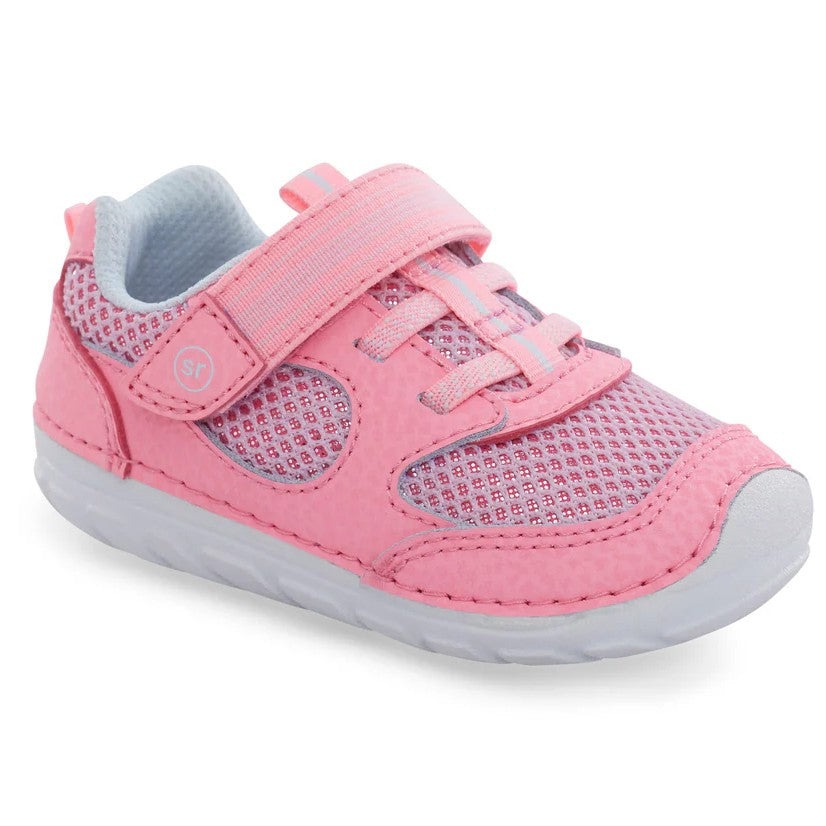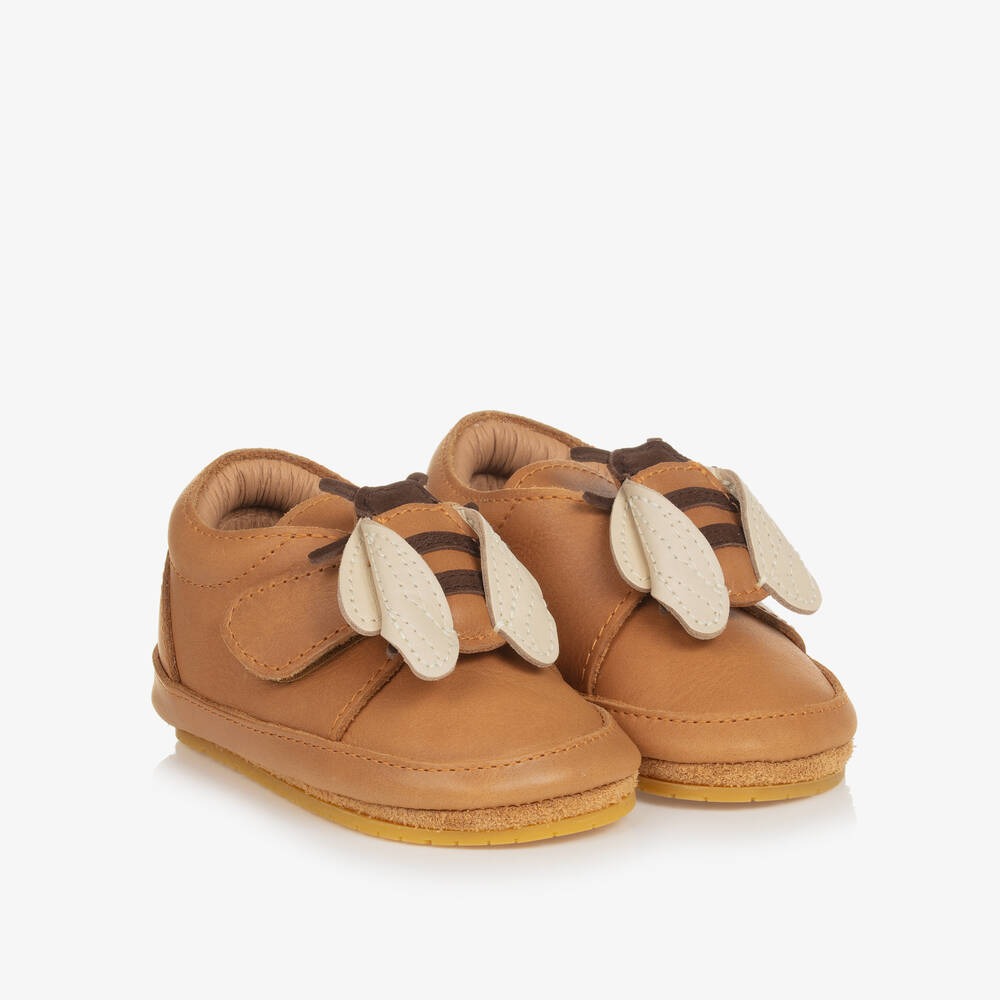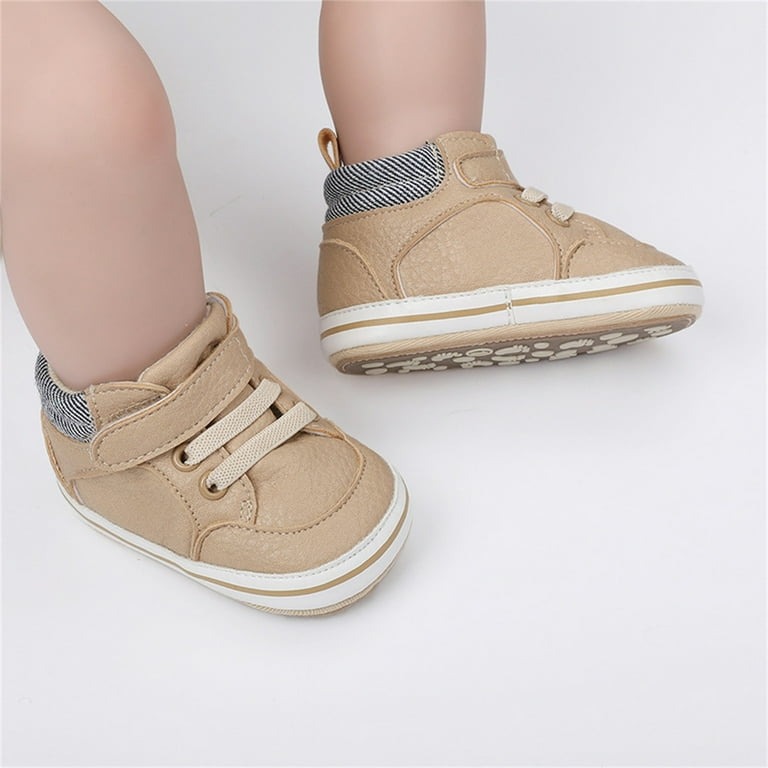Why Baby Walker Shoes Are Important
Baby walker shoes play a crucial role in a child’s development. These special shoes support infants’ feet during their first steps. They help to stabilize toddlers, providing a safe foundation as they learn to walk.
Good baby walker shoes promote healthy foot development. Soft, flexible soles allow for natural movement. They mimic the sensation of walking barefoot, which is ideal for growing muscles and tendons.
The right shoes can prevent injuries. Non-slip soles minimize the risk of slipping, protecting your baby from falls. Shoes that fit well safeguard against blisters and other discomforts.
Additionally, baby walker shoes instill confidence in toddlers. With a sturdy pair of shoes, they feel more secure making those bold new strides. This boosts their willingness to explore and develop motor skills.
Furthermore, these shoes protect little feet from harsh surfaces. Whether indoors or outdoors, they provide a barrier against heat, cold, and sharp objects.
By investing in high-quality baby walker shoes, you ensure your child has a supportive aid. They are an essential part of helping your child take those first precious steps with confidence and safety.
Key Features to Look for in Baby Walker Shoes

When shopping for baby walker shoes, certain features are non-negotiable. The best shoes for your little one should hit all the right marks for safety, comfort, and support. Here are the key features to keep an eye out for:
- Flexible Soles: Flexible soles are vital. They should bend easily. This mimics barefoot walking, encouraging natural foot development.
- Non-Skid Soles: Safety first. Non-skid or slip-resistant soles help prevent falls. They offer traction as your baby learns to balance and walk.
- Breathable Material: Your baby’s feet will stay comfortable with breathable materials. Fabrics like leather or canvas help prevent sweat and discomfort.
- Lightweight Design: Heavy shoes can hinder a baby’s walking. Look for lightweight designs that won’t drag little feet down.
- Cushioned Insoles: Comfort is key. Cushioned insoles provide extra support. They cushion the feet, making every step a delight for your baby.
- Proper Fit: Shoes that are too tight or too loose are a no-go. Look for adjustable closures like Velcro. They allow for a snug, custom fit as your baby’s feet grow.
- Ankle Support: High-top shoes can offer extra ankle support. This can help keep your baby’s feet stable during those shaky first steps.
- Appealing Design: Let’s not forget style. An attractive design can make getting dressed fun for your child. It might even encourage them to walk more.
Each feature plays a part in the development and protection of your baby’s feet. Prioritize these features when choosing baby walker shoes to ensure your little one’s first steps are secure and comfortable.
Types of Baby Walker Shoes
When selecting baby walker shoes, it’s important to understand the types available. Each type caters to different needs and stages of your baby’s walking journey. Here’s an overview of the common kinds of baby walker shoes you’ll come across:
- Pre-Walking Shoes: These are for babies who are still crawling and just starting to stand. They have very soft soles that are almost like socks but provide more protection.
- First Walkers: Built for the initial phase of walking, first walkers have a bit sturdier soles than pre-walkers, while still offering flexibility.
- Walking Shoes: Once your baby has mastered the art of walking, they’ll need something more durable. Walking shoes have firmer soles but still maintain flexibility and comfort.
- Outdoor Shoes: Outdoor baby walker shoes are made with rugged soles that can withstand rough grounds. They often have enhanced traction for safer outdoor play.
- Activity-Specific Shoes: As your child begins to be more active, specialized shoes, such as those for water play or sand, may be necessary.
- Seasonal Shoes: Depending on the climate, you might need seasonal shoes, like insulated boots for winter or breathable sandals for summer.
It’s crucial to pick the right type of shoe considering the environment and the level of your baby’s walking development. Make sure the baby walker shoes support your child’s feet without hindering their natural progression. Remember to choose shoes with non-skid soles, breathable materials, and a proper fit to keep your baby comfortable and safe as they explore the world on their feet.
Sizing and Fit: Getting It Right
Getting the right fit for baby walker shoes is crucial. Ill-fitting shoes can lead to foot issues and hamper your baby’s learning to walk. To ensure proper fit, consider these key points:
- Measure Regularly: Babies’ feet grow fast. Measure their feet every few weeks to keep up with changes.
- Size Up Slightly: Allow a little extra space for growth. But ensure it’s not too much, as oversized shoes can cause tripping.
- Check for Space: Press gently on the shoe’s front while your baby is wearing them. There should be a thumb’s space between the toe and the shoe end.
- Watch for Signs: Red marks or irritation indicate poor fit. Also, if shoes slip off easily or your baby trips often, the size might be wrong.
- Try on Later in the Day: Feet swell throughout the day. Fitting shoes in the afternoon or evening can give a more accurate size.
- Fitting with Socks: Always fit shoes with the socks your baby will wear. This helps ensure the size is right with added fabric.
- Room to Wiggle: Your baby should be able to move their toes freely. Make sure the toe box is roomy enough.
- Ankle Room: Proper ankle fit is important. Shoes should not dig into the ankle or be too loose.
For the best fit, you might need to go to a children’s shoe store where experts can assist. They can recommend the correct size and style for your baby’s feet. Comfortable, well-fitting baby walker shoes can make all the difference in your child’s first steps.
Top Rated Baby Walker Shoes of 2025

Choosing the best baby walker shoes is crucial for your child’s first steps. In 2025, certain brands and models stand out for their quality and design. Here’s a list of top-rated shoes that meet all the important criteria.
- Flexible Explorer: This shoe features ultra-flexible soles. Kids move naturally, feeling the ground beneath.
- Grip Master: These come with non-skid soles. They give amazing traction for those wobbly steps.
- Airy Steps: With breathable materials, these prevent sweaty feet. Your baby stays comfy.
- Featherlight: Lightweight designs here. No dragging down tiny feet.
- Soft Touch: Cushioned insoles in these shoes make every step joyful.
- Perfect Fit: Shoes with adjustable straps. They fit just right as feet grow.
- Stable Strides: High-top styles for extra ankle support. Help keep balance.
- Happy Feet: Fun designs encourage walking. These shoes make dressing up exciting.
Each pair of baby walker shoes on this list has been praised by parents and experts alike. They meet the needs for comfort, safety, and support during your baby’s walking development. Make sure the shoe you choose for your little one includes these top features. Select with care to ensure those small steps are as safe and supportive as possible.
Where to Buy Baby Walker Shoes
Choosing the right place to buy baby walker shoes is as important as the shoe features. Here are some ideal places:
- Children’s Shoe Stores: Experts here can help find the perfect fit. They offer a wide range of sizes.
- Online Retailers: Convenience at your fingertips. Look for stores with good return policies and customer reviews.
- Department Stores: They have a variety of brands. You can compare different shoes side by side.
- Specialty Baby Shops: Unique and high-quality options are available. Staff might be more knowledgeable about infant needs.
- Secondhand Shops: For those on a budget, gently used shoes can be a find. Inspect them well for wear and fit.
Make sure to check for non-skid soles, breathable materials, and proper fit. Take advantage of store return policies if the shoes don’t meet expectations. Remember, buying the right baby walker shoes can aid your child’s walking journey.
Caring for Baby Walker Shoes: Tips and Tricks
Maintaining baby walker shoes is vital for their longevity. Here’s how to keep them in top shape:
- Clean Regularly: Wipe off dirt after each use. Use a soft cloth or brush for canvas, and a damp rag for leather.
- Air Dry Properly: Never use direct heat to dry shoes. Let them air out to prevent material damage.
- Store Correctly: Place shoes in a cool, dry area. Keeping them in a shoe rack can avoid misshaping.
- Alternate Pairs: Rotating between shoes lets each pair rest. This reduces wear and tear.
- Avoid Washing Machines: They can be harsh on baby shoes. Hand washing is safer for delicate materials.
- Use Protective Sprays: For leather shoes, consider sprays that repel water and stains. Follow label instructions.
- Check for Damage: Look for loose threads or worn soles. Repair or replace if necessary.
- Follow Manufacturer’s Care Instructions: Each shoe might have specific needs. Check the label.
By following these tips, baby walker shoes can last longer. This helps your baby get the most out of every pair. Keep them clean, dry, and well-stored to extend their life.
Common Mistakes to Avoid When Purchasing Baby Walker Shoes

When buying baby walker shoes, avoiding common pitfalls can save you time and money. Here are some mistakes to steer clear of:
- Ignoring Fit for Style: While cute designs are tempting, comfort and fit should come first. Don’t choose style over a proper fit.
- Skipping the Size Check: Not measuring your baby’s feet regularly can lead to buying the wrong size. Make it a habit to measure.
- Choosing Non-Flexible Soles: Hard soles can restrict natural foot movement. Always opt for flexible soles for healthy development.
- Compromising on Non-Slip Soles: Safety is paramount. Avoid shoes without non-skid soles to prevent falls.
- Overlooking Shoe Weight: Heavy shoes may hinder walking. Pick lightweight options to ease your baby’s steps.
- Buying Shoes Too Early: Wait until your baby really starts to stand or walk before purchasing. Early buys may end up being the wrong size.
- Forgetting to Plan for Growth: Babies grow quickly. Choose shoes with a bit of extra space to accommodate rapid growth.
- Not Considering the Environment: Outdoor and indoor shoes are different. Match the shoe type with your baby’s activities.
- Buying Without Trying: If possible, have your baby try on shoes before buying. This ensures the best fit and comfort.
- Ignoring Return Policies: Always check return policies when buying shoes. This gives you flexibility if the fit isn’t right.
By avoiding these mistakes, you’re more likely to find baby walker shoes that are safe, comfortable, and suitable for your baby’s walking journey. Don’t forget to integrate these tips with the crucial features of baby walker shoes for a wise purchase.